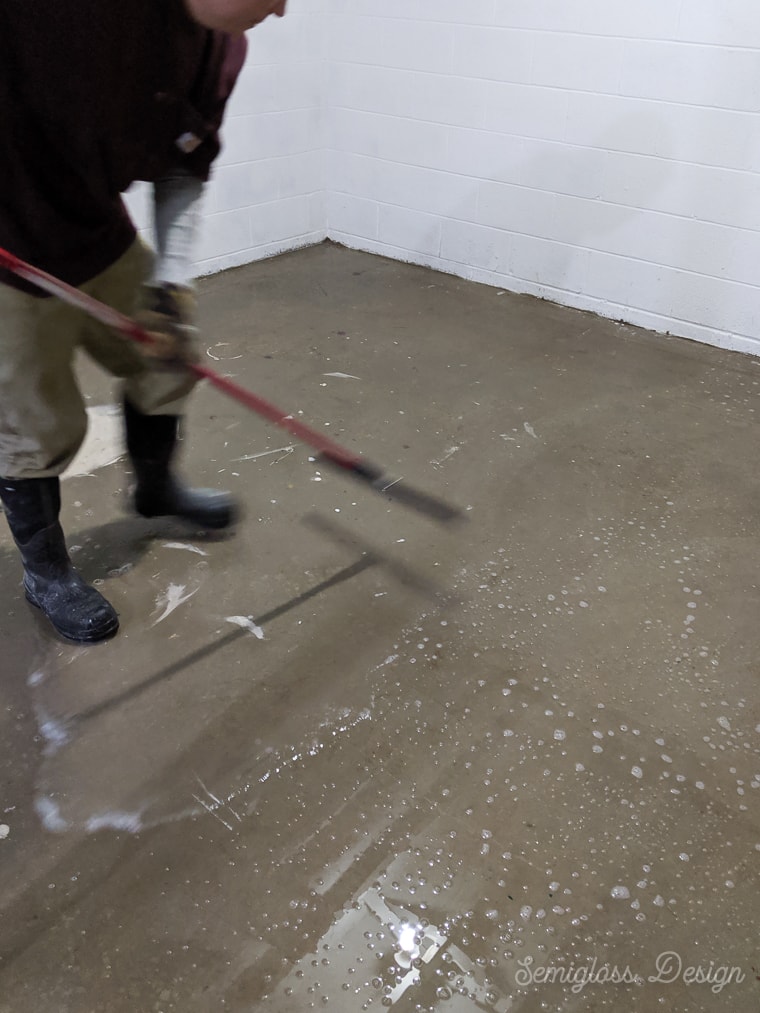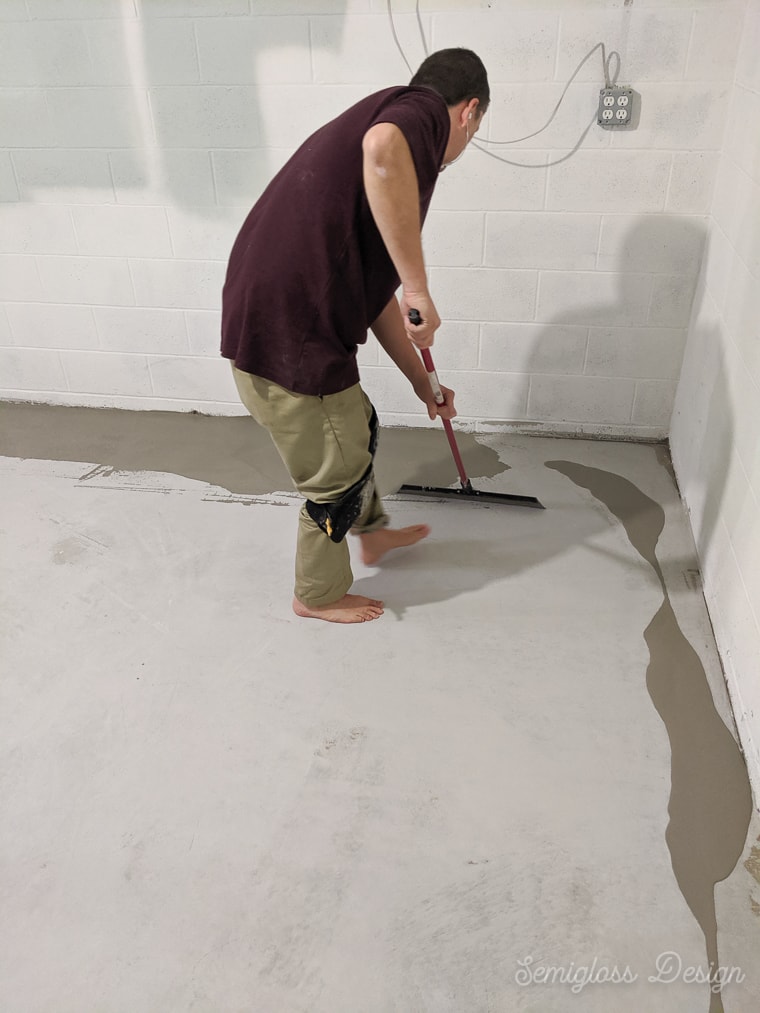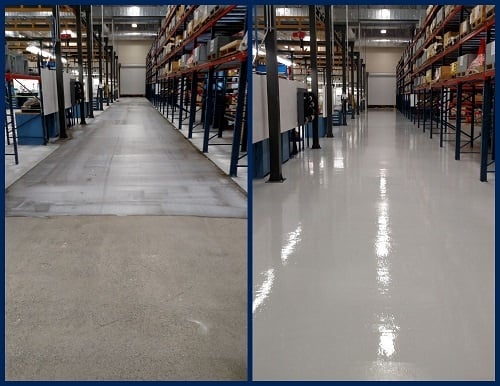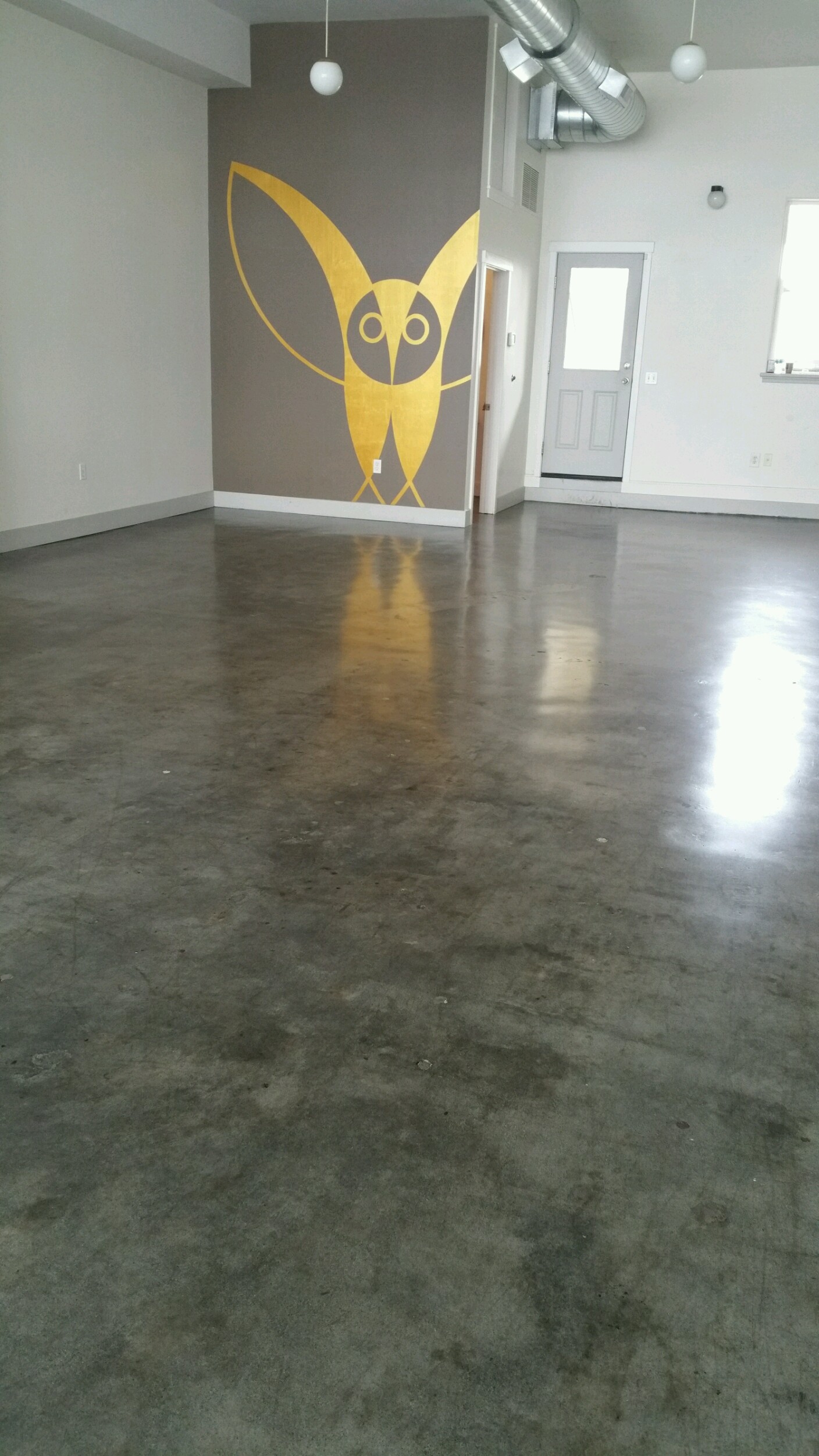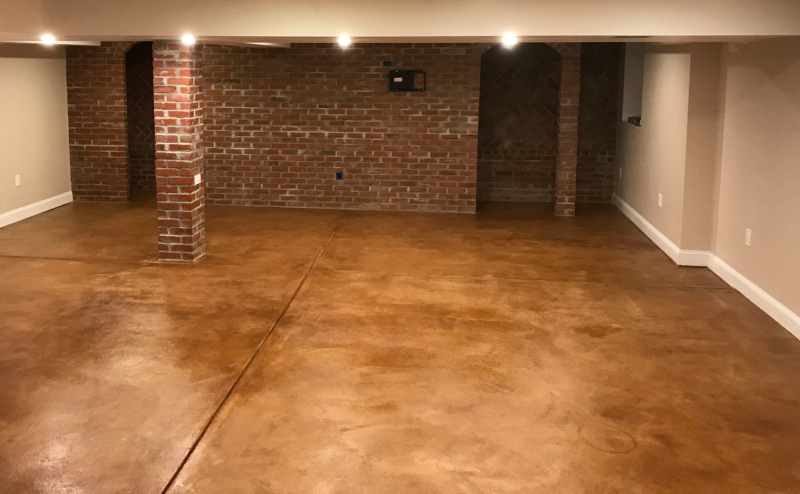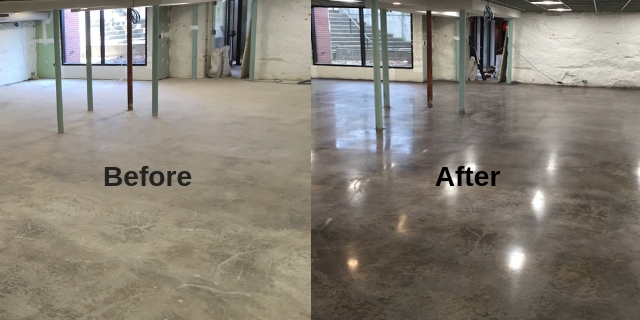Why Refinishing Your Basement Floor is Worth the Investment
When it comes to enhancing the value, usability, and aesthetic appeal of a basement, refinishing the floor can be one of the best investments. Many homeowners overlook the basement floor, seeing it as a purely functional space. However, a well-finished basement floor not only makes the space feel more inviting but can also yield impressive returns on investment. Here’s why I believe it’s worth every penny and effort.
- Increased Home Value
Refinishing a basement floor is a project that can significantly increase your property’s value. Potential buyers are often interested in homes with finished basements, as they view them as ready-to-use spaces. A clean, finished floor can give your basement a fresh look, making it an attractive asset and justifying a higher price when you’re ready to sell. If you’re looking to add value to your home, refinishing the basement floor is one of the most cost-effective upgrades. - Expanded Usable Space
A finished floor transforms your basement from a storage area into a usable living space. It could serve as a recreational room, home office, gym, or even a rental suite. When you’re not confined to bare, unfinished concrete, you can start envisioning your basement’s full potential. Adding an appealing floor allows you to create an extension of your home, offering a comfortable, clean environment for various activities. - Improved Aesthetic Appeal
Refinishing the floor can completely change the feel of a basement, from dull and dreary to polished and welcoming. Imagine walking down to a basement with a sleek epoxy coating, a warm wood-look vinyl, or a durable and stylish stained finish. The right floor can make your basement an aesthetically pleasing part of the home, giving it a design boost that ties in with the rest of the house. - Enhanced Comfort and Warmth
Basement floors are known for their cold, unwelcoming feel, especially if left as unfinished concrete. With refinishing, you can create a more comfortable environment by adding materials that are warmer underfoot. You might choose insulating materials that help retain heat or add a layer of cushioning, making it more pleasant to walk or sit on the basement floor. - Easier Maintenance and Cleaning
An unfinished basement floor can attract dust, absorb moisture, and be difficult to clean. A finished floor, on the other hand, is typically easier to maintain. Finishes like epoxy, paint, or vinyl resist stains and moisture, simplifying cleanup. This can be especially useful if you use your basement for projects, as spills and messes are easier to handle with a finished surface. - Moisture Protection and Durability
Basements are prone to moisture issues, which can lead to mold, mildew, and damage to belongings. Many finishing materials, like epoxy or sealants, create a moisture-resistant layer that protects the floor and reduces the risk of mold and water damage. This layer also increases durability, helping the floor withstand heavy foot traffic and rough use.

Choosing the Right Material for Basement Floor Refinishing
Selecting the right material for basement floor refinishing is crucial, as basements have specific challenges that need addressing. From moisture levels to durability, the material you choose can affect both the look and functionality of your basement. Here’s a look at some popular basement flooring options and why each might (or might not) work for your needs.
Epoxy Coatings: A Durable and Moisture-Resistant Option
Epoxy is a popular choice for basement floors because of its durability and resistance to moisture. It creates a hard, glossy surface that’s easy to clean, which can be a big advantage in a basement setting. Epoxy is also highly resistant to stains, chemicals, and heavy traffic, making it ideal for multipurpose basements that see a lot of use.
Vinyl Planks or Tiles: Versatile and Cost-Effective
Vinyl flooring offers an attractive, comfortable option that comes in various styles, including wood-look and stone-look finishes. It’s durable and waterproof, which is essential for basements. Vinyl is also relatively easy to install, making it an appealing choice for DIY enthusiasts. Its insulating properties help reduce the coldness that’s typical of basement floors, making the space more comfortable.
Concrete Stain: Stylish and Low Maintenance
Staining the existing concrete floor is a simple, stylish option that allows you to add color and character to the basement. Concrete stains can be either acid-based or water-based, with acid stains providing more of a natural stone look. Staining is relatively affordable and easy to maintain, though it may require periodic resealing to retain its appearance.
Carpeting: A Cozy and Warm Choice
While carpeting can add a level of warmth and comfort that’s hard to match, it may not be ideal for every basement due to moisture concerns. However, if your basement is dry and well-sealed, carpeting can provide a soft, warm surface underfoot, making it feel like any other room in the house. Opt for moisture-resistant or water-resistant carpet options to extend the flooring’s lifespan.
Tile Flooring: Durable but Requires Proper Insulation
Tile is another durable choice that offers a wide range of styles and colors. However, it can be cold underfoot, so consider using radiant heating or adding insulation to keep the basement comfortable. Porcelain and ceramic tiles are popular options, but it’s crucial to choose slip-resistant tiles, as basements are prone to humidity and can become slippery.
Engineered Wood: The Look of Wood Without the Risks
For those who want a wood look without the moisture-related drawbacks of traditional hardwood, engineered wood is a good alternative. It’s more moisture-resistant than solid wood, thanks to its layered structure, and offers a warm, natural appearance. Engineered wood is also a great option for basements that have been properly waterproofed but may not be suitable for areas prone to flooding.
Preparation Steps for a Successful Basement Floor Refinishing
Preparing your basement floor correctly is the foundation for a successful refinishing project. Taking the time to address underlying issues like moisture, dirt, and damage ensures that your chosen finish will last longer and look better. Here’s how to prepare for the best results in basement floor refinishing.
Check for Moisture and Water Issues
Basements are often susceptible to moisture, so before starting, it’s essential to check for any water issues. This can include examining the walls and floor for signs of dampness, water stains, or mold. Addressing these issues upfront will help ensure your refinished floor stays in good condition and reduce the risk of mold growth.
Clean and Clear the Basement Floor
Start by removing any items from the basement floor, including furniture, rugs, and storage bins. Once the area is clear, sweep and vacuum the floor to remove dirt, dust, and debris. A clean surface is essential for good adhesion and a smooth finish. Any grease, oil, or residue should be cleaned thoroughly, as these can interfere with the refinishing process.
Repair Cracks and Damage
Cracks and chips in the basement floor should be repaired before applying a finish. Use a concrete filler or patching compound to fill in cracks and smooth out any rough areas. Allow the filler to dry completely before moving on to the next step. Addressing these imperfections will give you a more even, professional-looking finish.
Etch the Floor for Better Adhesion
Etching the floor involves using a special solution, often an acid-based cleaner, to create a slightly rough texture on the concrete. This step helps ensure that the finish you apply will bond well with the surface. Follow the instructions on the etching product and wear protective gear for safety. After etching, rinse the floor thoroughly and allow it to dry completely.
Seal the Floor to Prevent Future Moisture Issues
If you’re planning to use a material that’s sensitive to moisture, such as carpeting or wood, consider applying a concrete sealer to add an extra layer of moisture protection. Sealing the floor can help reduce the chances of future water damage, making your refinished floor last longer. Be sure to allow ample time for the sealer to dry before moving forward.
Prime for Enhanced Durability and Color
For finishes like paint or epoxy, applying a primer can enhance the durability and appearance of the final product. Primer helps the finish adhere to the concrete, especially in high-traffic areas. It can also improve color vibrancy and longevity, ensuring that your basement floor looks as good as possible for years to come.
DIY vs. Professional Basement Floor Refinishing: What You Need to Know
Deciding between a DIY approach and hiring a professional for basement floor refinishing can significantly impact the project’s outcome. Both options have advantages and drawbacks, depending on your budget, time, and skill level. Here’s what you need to know to make the best decision.
Budget Considerations
One of the main reasons people consider a DIY approach is the potential for cost savings. When you refinish the basement floor yourself, you can avoid labor costs, which can be substantial. However, it’s essential to factor in the costs of materials, tools, and supplies needed for a DIY project. In some cases, professional refinishing companies can offer bulk rates on materials, making their services surprisingly cost-effective. Assess your budget realistically, as mistakes with DIY can sometimes lead to additional costs for repairs.
Skill and Experience Level
Refinishing a basement floor requires certain skills, especially if you’re working with materials like epoxy or concrete stain. If you have experience with similar projects, a DIY approach might be achievable. However, if you’re new to flooring or home improvement, the learning curve can be steep. Professionals bring years of expertise, ensuring a polished result and often including a warranty on their work. DIY enthusiasts should consider their experience level and willingness to learn before deciding.
Time Commitment and Availability
DIY projects typically require more time than hiring a professional. Between preparing the floor, applying the finish, and allowing for drying time, refinishing a basement floor can be a lengthy process. If you have a busy schedule or want the basement ready quickly, a professional may be the better option. Professionals have the necessary tools and staff to complete the project more efficiently, which can be a big advantage if time is a concern.
Quality and Durability of the Finish
Professionals have access to industrial-grade materials and advanced tools, which can result in a more durable and high-quality finish. They know the best techniques for even application and can troubleshoot issues that may arise during the process. DIY refinishing can yield good results, but the quality may vary depending on the materials used and the skill level. If long-term durability is essential, consider investing in a professional to achieve a lasting finish.
Health and Safety Risks
Refinishing basement floors often involves dealing with chemicals, dust, and other hazards. DIY refinishing requires proper ventilation and protective gear, as some products emit fumes that can be harmful if inhaled. Professionals are trained to handle these risks and have the equipment to protect themselves and their home. If health and safety are concerns, especially in a household with pets or children, hiring a professional can provide peace of mind.
Potential for Costly Mistakes
Mistakes in basement floor refinishing can be costly and challenging to fix. Errors in surface preparation, application, or drying time can affect the finish’s appearance and durability. A professional will likely get it right the first time, while DIY refinishing could involve trial and error. For homeowners who prefer a reliable outcome, the cost of a professional may be worth it to avoid the risk of costly do-overs.
Understanding Different Finishing Options: Stains, Epoxy, and Paint
Choosing the right finish for your basement floor is essential to achieving the look, durability, and ease of maintenance you desire. The three main options—stains, epoxy, and paint—each offer unique benefits and are suited for different needs. Here’s an in-depth look at these popular basement floor finishing options.
Concrete Stains: Aesthetic Appeal and Easy Maintenance
Concrete stains offer a beautiful, natural look with minimal maintenance. Available in water-based or acid-based options, concrete stains add color and depth to the floor. Acid stains produce a more organic, variegated look that mimics stone, while water-based stains allow for a broader range of colors. Stains penetrate the concrete, making them less prone to chipping and ideal for low-maintenance needs. However, they may require periodic resealing to maintain the look over time.
Epoxy Coatings: Durability and Customization
Epoxy is a highly durable option that creates a hard, glossy finish perfect for multipurpose basements. It’s resistant to stains, chemicals, and moisture, making it ideal for high-traffic areas. Epoxy coatings come in a wide range of colors and can include decorative flakes for a speckled effect. One of the main advantages of epoxy is its ability to withstand heavy wear and tear. However, applying epoxy can be challenging for beginners and requires careful surface preparation for best results.
Paint: Budget-Friendly and Customizable
Floor paint is a budget-friendly option that allows for significant customization. It’s available in various colors and finishes, allowing you to match the basement floor to your aesthetic preferences. Paint can be easier to apply than epoxy and provides a fresh, clean look. However, it’s less durable and may require more frequent touch-ups, especially in high-traffic areas. Paint is best suited for basements with low moisture levels, as excessive humidity can cause it to peel over time.
Sealing Options for Additional Protection
No matter which finish you choose, sealing the floor can provide added protection, particularly in moisture-prone basements. Sealers can extend the life of concrete stains and paints, as well as enhance the durability of epoxy. There are various types of sealers available, such as acrylic or polyurethane, each with specific benefits. A sealant layer can add to the floor’s shine and improve resistance to scratches, moisture, and staining.
Ease of Application and Drying Time
Each finishing option varies in application complexity and drying time. Staining and painting can typically be done in one or two days, while epoxy requires careful layering, drying, and curing times that can take several days. Consider your timeframe when choosing a finish, as epoxy might not be ideal if you need a quick turnaround. Painting and staining generally have simpler application processes, making them better for DIY projects.
Factors to Consider for Each Option
When selecting a finish, think about your basement’s purpose, moisture levels, and maintenance requirements. Epoxy is ideal for utility or recreational rooms, while stains or paint may be better suited for basements used as family or relaxation spaces. Maintenance frequency and budget are also important; epoxy has a higher upfront cost but requires less maintenance, while the paint is affordable but may need regular touch-ups. Choose the option that best aligns with your priorities for a basement floor that meets your needs.
Maintaining Your Newly Refinished Basement Floor for Longevity
Maintaining a refinished basement floor doesn’t have to be difficult, but it does require regular care to preserve its look and durability. With the right maintenance, you can enjoy your investment for years. Here are the steps I find most effective for keeping a refinished basement floor in top shape.
Sweep and Dust Regularly
Dust and dirt accumulation can cause scratches and wear over time. Sweeping or using a dust mop weekly can prevent buildup, especially if you use the basement frequently. If you have pets or the basement is a high-traffic area, consider dusting more often. Regular cleaning keeps the finish looking fresh and helps avoid dirt getting embedded in the surface.
Avoid Excess Moisture
Even if your finish is moisture-resistant, it’s best to avoid excessive water on the basement floor. Mop with a damp—not wet—mop, and use a gentle cleaner suitable for your finish type. Avoid flooding the floor or using harsh chemicals, as these can damage finishes like stain, epoxy, or paint over time. If spills occur, clean them up promptly to prevent any potential staining.
Use Protective Pads on Furniture
Heavy furniture can scratch or scuff the floor, so add protective pads to furniture legs. This is especially important with epoxy finishes, as sharp objects can leave visible marks. Avoid dragging furniture across the floor to prevent unsightly scrapes and always lift items when moving them around the basement.
Apply a New Sealer as Needed
Depending on the finish you choose, reapplying a sealer every few years can help maintain durability and resistance to moisture. Concrete stains and painted floors, in particular, may benefit from a fresh coat of sealer. This additional layer can extend the lifespan of your finish and keep the floor looking polished and vibrant.
Consider Area Rugs for Added Protection
Placing area rugs in high-traffic areas can prevent wear and protect your floor from scuffs and stains. Rugs are especially useful in spaces where kids play or areas prone to spills. Be sure to use non-slip pads to keep the rugs in place, as sliding can damage the finish.
Avoid Harsh Chemicals
Strong cleaning agents can degrade finishes, so opt for gentle, non-abrasive cleaners specifically designed for your floor type. Avoid acidic cleaners and bleach, as they can strip finishes or cause fading over time. Sticking to mild solutions will help preserve your floor’s color and finish.
Common Mistakes to Avoid in Basement Floor Refinishing
Refinishing a basement floor can add value and style, but it’s easy to make mistakes that can compromise the result. From improper preparation to choosing the wrong materials, avoiding these common pitfalls can save time and money while ensuring a successful outcome. Here’s a breakdown of what to avoid for the best results.
Skipping the Moisture Test
One of the most significant errors in basement refinishing is neglecting to test for moisture before starting. Basements are naturally more humid, and even small amounts of moisture can prevent finishes like paint or epoxy from adhering properly. A quick moisture test, such as taping a piece of plastic to the floor and checking for condensation, can reveal any issues. Addressing moisture concerns upfront, whether through sealing or dehumidification, will help ensure a durable, long-lasting finish.
Inadequate Surface Preparation
Properly preparing the basement floor is crucial. Skipping steps like cleaning, repairing cracks, or etching the surface can lead to uneven application and poor adhesion of finishes. Many people underestimate how much time and effort surface preparation requires. Thoroughly cleaning, repairing damage, and applying primer where needed provide a smooth base and increase the lifespan of the finish. Rushing this step often leads to peeling or flaking down the line, which can be costly to fix.
Choosing the Wrong Finish for the Basement Environment
Selecting the wrong finish type can lead to disappointments or damage. For example, carpet may feel cozy, but it’s unsuitable for moisture-prone basements. Epoxy is highly durable but may not suit all spaces. Taking time to research the characteristics of stains, epoxy, and paints can help you select the best option for your specific environment. The wrong finish can result in higher maintenance needs, reduced durability, and a shorter lifespan.
Not Allowing Enough Drying and Curing Time
Rushing through the drying or curing phase is another common mistake. While it’s tempting to want the project finished quickly, not allowing enough drying time can lead to peeling, bubbling, or soft spots. Each material has its own recommended curing time, which should be followed strictly. If you’re using multiple layers, such as primer and paint, ensure each layer has dried fully before moving on to the next step. Patience during drying will yield a better finish and reduce the need for touch-ups.
Improper Application Techniques
Application techniques vary for each type of finish, and using the wrong tools or methods can negatively impact the outcome. For instance, using a brush instead of a roller for large surfaces can lead to streaks. Applying epoxy too thickly or using the wrong spreading technique can create uneven surfaces or visible brush marks. Follow application instructions closely and use recommended tools to achieve a professional-looking finish.
Neglecting Maintenance Post-Refinishing
After putting in the effort to refinish the basement floor, it’s crucial not to overlook maintenance. Regular cleaning, reapplying sealant as needed, and avoiding harsh chemicals can keep the floor looking its best. Some homeowners assume that once the floor is refinished, it requires no upkeep. However, small steps like dusting and applying protective pads to furniture can go a long way in preserving the floor’s appearance and durability.
What is the best flooring option for a basement prone to moisture?
For moisture-prone basements, epoxy coatings, and concrete stains are ideal. Epoxy is highly resistant to moisture and creates a durable, seamless surface. Concrete stains are also resilient and allow the floor to breathe, reducing the risk of moisture buildup. Both options require minimal maintenance and are excellent for high-humidity environments. Vinyl planks are another option, as they’re waterproof and come in various styles.
Can I refinish my basement floor without removing all the furniture?
It’s best to clear the space as much as possible before refinishing the basement floor. Removing furniture ensures that you can reach every part of the floor and achieve an even finish. If removing everything isn’t feasible, consider working in sections and moving items as you go. Keep in mind that some finishes, like epoxy, require uninterrupted curing time, so it’s generally best to start with an empty room.
How long does basement floor refinishing take?
The time needed depends on the type of finish and the drying time between layers. Simple staining or painting can often be completed within a day or two, including drying. Epoxy and more intricate finishes may require several days to complete due to preparation, application, and curing times. DIY refinishing projects may take longer if extra time is needed for preparation or learning new techniques.
How can I prevent scratches and scuffs on my refinished basement floor?
To protect the floor, use area rugs in high-traffic areas and apply protective pads to furniture legs. Regularly sweeping and avoiding harsh cleaners can also prevent scratches. For finishes like epoxy, periodic maintenance with a soft mop or non-abrasive cleaner will help maintain its shine. If you choose concrete stain or paint, reapplying a sealer every few years can offer additional protection against wear.
Is basement floor refinishing a DIY-friendly project?
Yes, but it depends on the finish and your comfort level with DIY projects. Painting and staining are generally more DIY-friendly, as they require fewer tools and straightforward application. Epoxy, however, is more complex, requiring specific conditions for proper adhesion. DIY enthusiasts with experience in home improvement projects may find epoxy doable, but beginners might prefer hiring a professional for a high-quality result.
How often should I reapply sealant or refinish the basement floor?
Reapplication frequency depends on the finish type and the level of use. Epoxy coatings typically last several years, often five to ten, before needing touch-ups. Concrete stains may require resealing every few years, especially in high-traffic areas. Painted floors may need touch-ups annually or every few years, depending on wear. Regular cleaning and maintenance can help extend the lifespan of any refinished floor.
Garner Basement Metallic Floor
Wood Floor Refinishing in Santa Monica
Basement Flooring: Repair, Staining, Sealing & Epoxy Coatings
Related Posts:
